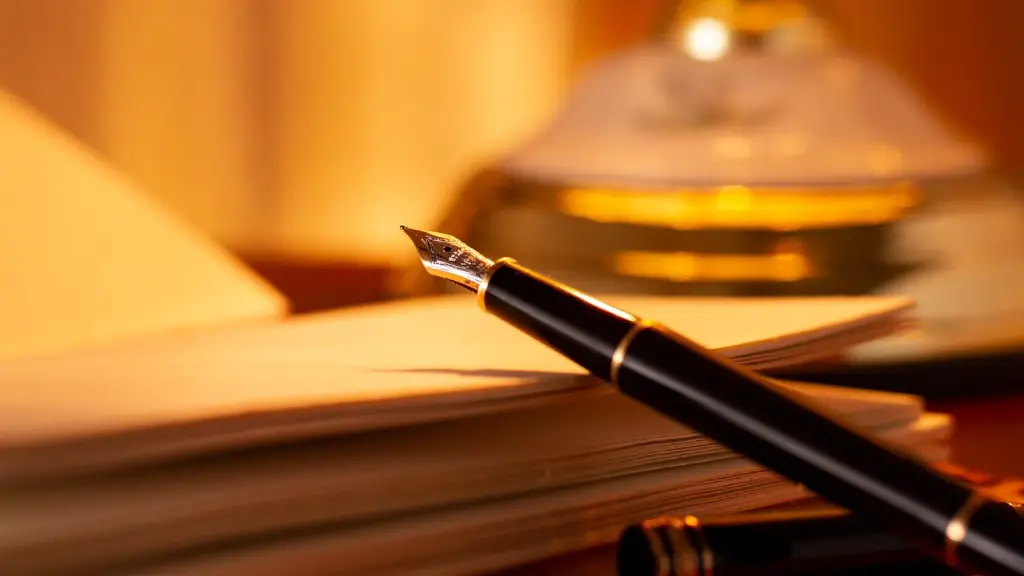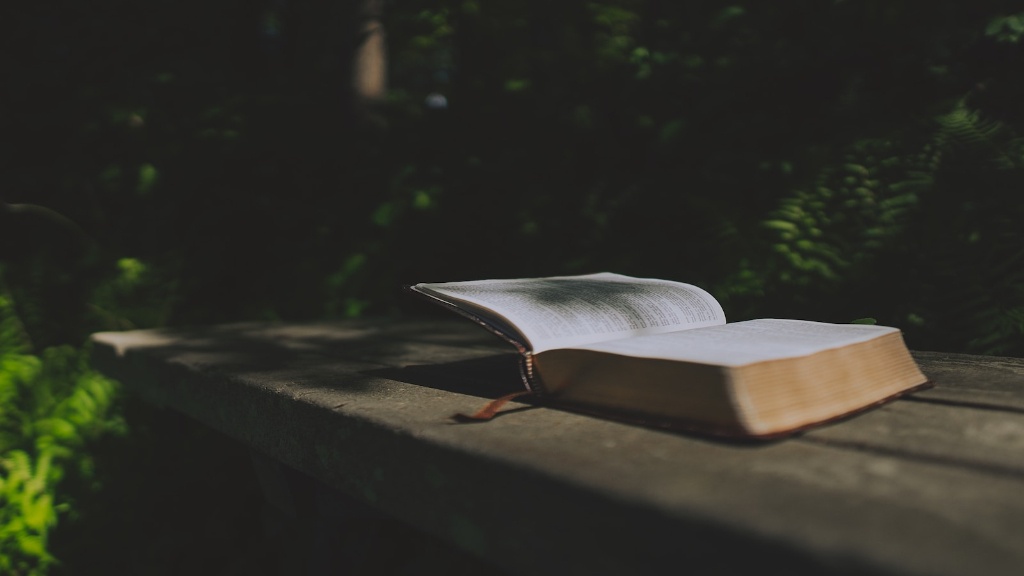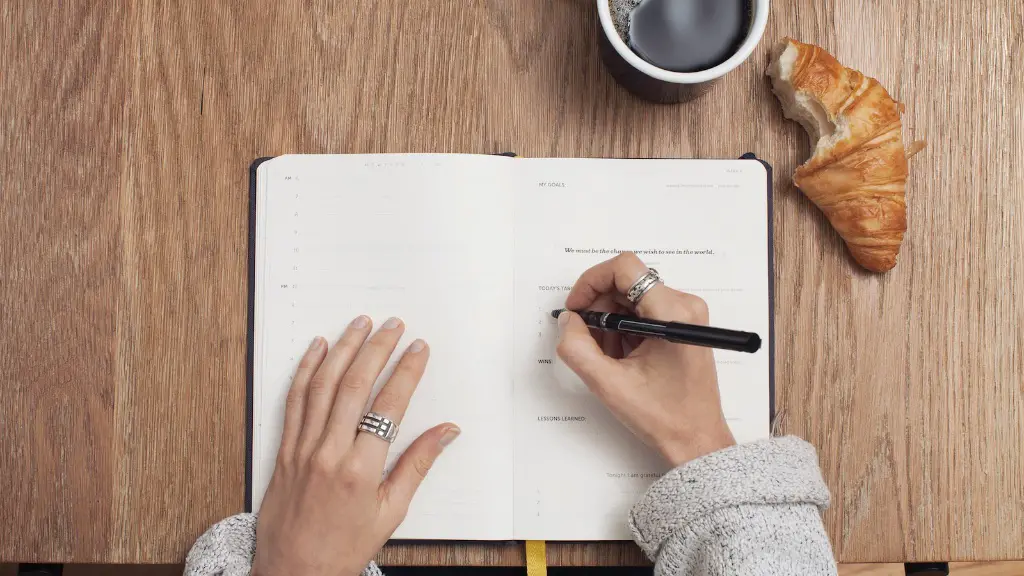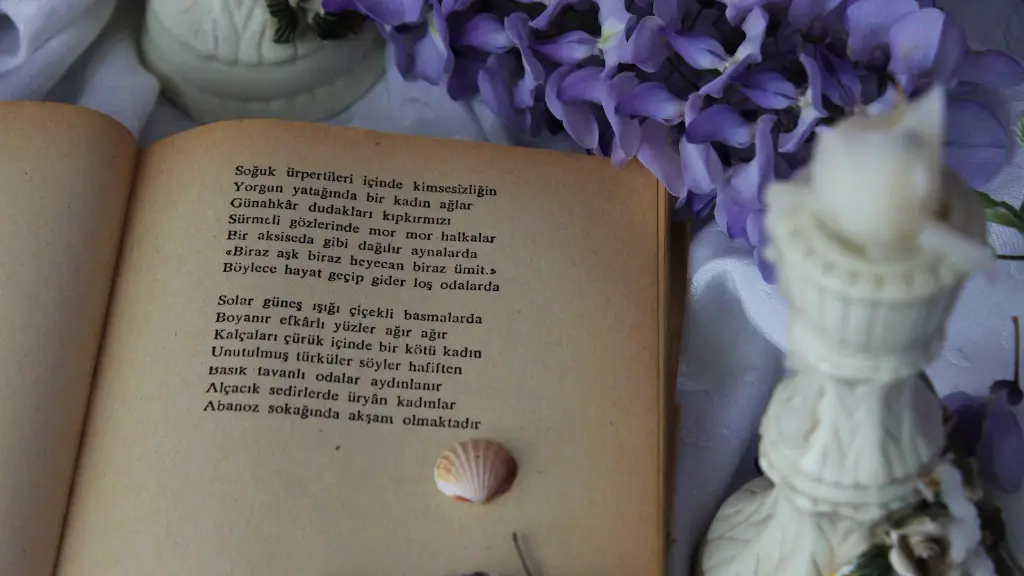When it comes to writing a poem, one of the elements that authors often look to incorporate is sound. Sound, in the context of poetry, is usually used to create a more nuanced pictorial image, often giving a line or stanza an emotive quality which the reader can understand and connect more deeply with.
The two main features of poetry which influence its sound are rhythm and rhyme. Rhythm is the regular pattern of stressed or unstressed syllables throughout a verse or line. These rhythms can be simple or complex, depending on the flow of language chosen by the author.
Rhyme is a key factor in many types of poetry. It involves two words which share the same sound at the end of a line or verse. This often adds a strong and emotive element to the poem, creating a distinctive and memorable sound for the reader.
However, it is important to note that not all poems are written in rhyme or rhythm. Poets may also choose to write in prose or blank verse; they may choose to place no emphasis on sound at all. This is known as free verse, which leaves room for more artistic freedom in the arrangement and flow of a poem.
When judging the effectiveness of a poem’s sound, one of the main questions to ask is whether or not the poem’s imagery and language reflects the mood it is trying to convey. Whilst rhyme may help to give a poem its signature sound, rhythm and imagery can be just as, if not more important, in creating a poem’s tone.
Different meters and rhythms also add to a poem’s sound. Here, authors are looking to create rhythms which can embody various emotions, from happiness and joy, to sorrow and fear. When using meter, writers will usually try to vary the number of syllables, sounds and pauses as they compose their pieces.
The use of sound in poetry can help to convey a variety of feelings, sentiments and themes. It is an important element when considering the overall impact of a poem. When used effectively, it can help to capture the spirit of a poem and add emotion and complexity to it.
Structure of Poem
The structure of a poem can also affect how its sound is interpreted by the reader. Depending on the genre that the author is writing in, stanzas, verses, lines and punctuation can all influence how a poem is read and how its sound is received.
For instance, some authors may opt for a quatrain (a four-line stanza) for their poem, whereas others might prefer a sonnet (with fourteen lines). Alternatively, some poets choose to form their poem into a ballad, meaning that the occasional use of rhyme in the poem will add dramatic emphasis.
Prosody
Prosody is the study of poetic meter, rhythm and sound. It is an important aspect of poetry and plays a major role when it comes to the sound of a poem.
A poem’s prosody is often seen as its musicality, giving it an accompanying rhythm with each line and stanza. When used effectively, it can create a cohesive and unique sound. It allows poets to experiment with language and explore how it can influence a poem’s meaning and overall tone.
Alliteration and Assonance
Other elements which contribute to the sound of a poem are alliteration and assonance. Alliteration is the repetition of a sound at the start of multiple words, such as “stepping softly” or “happy hound”. Assonance, however, is the repetition of a vowel sound within words, such as in the phrase “sheep sleep deep”.
Both of these elements are key tools used by authors to add texture and rhythm to a poem. When used in combination with other poetic devices such as rhyme and meter,they can help the author effectively capture and convey the feeling of the poem.
Verse and Line Length
The length of lines and verses can also affect a poem’s sound. Longer verses, such as those found in epic poems, often help to create a more serious and sombre tone. Shorter verses, however, are often seen as more playful or funny, which can help to draw a light-hearted sound from the poem.
Different line lengths and syllable counts also influence how a poem is read and how the sound is received. Authors can use various language techniques to alter the rhythm of a line, such as using enjambment (the continuation of a thought from one line to the next) or caesura (the breaking of a line with a pause).
Context
The context of a poem can also influence its sound. Depending on the occasion, the poem might be written to evoke certain feelings and emotions. For example, a poem written for a wedding will likely be written in a more joyful and light-hearted style than one written for a funeral.
The setting of the poem may also determine the type of sound the poet is aiming to achieve. An outdoors poem may contain more vivid imagery and an upbeat rhythm, whereas one written indoors may focus more on the subtle details of the environment.
Style
The style of a poem can also affect its sound. If the poem is written using lyricism, it will likely feature more concise language and vivid imagery. On the other hand, if the poem is written using satire, it might contain more humour and irony.
Overall, the sound of a poem can be enhanced by the use of sound elements such as rhythm, rhyme and prosody. Authors may also want to consider the structure, context and style of their poem to see how its sound can be enhanced.




